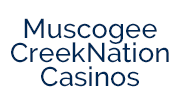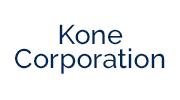The 7-Step Process to Retain, Engage and Create Loyal Employees
Published February 6, 2019
Introduction
An organization in need of prosperity can master the know-how that it is never about how skilled employees are, but how devoted and loyal they are to the objectives and course of the organization. Therefore, employee’s skills and retention can always be nurtured and, with a proper organizational structure, made to fit into the desired skill preferences which increase their devotion and determination. An organization can create employee loyalty using the 7-Step Process to Retain, Engage and Create Loyal Employees:
1) Begin by building a culture of openness and inclusion
An organization should prioritize establishing structures and strategies that are transparent by always giving insights to every stakeholder especially employees, on any plans made by the management. This helps employees feel recognized and trusted by the management in that it includes them in the forming of visions for the organization (Rousseau, 2015). Moreover, during the creation and drafting of new plans, the organization should include employees’ insights and interests to gain buy-in, rather than dictating and imposing unexpected procedures upon them. Doing this should gain them project support in the future.
2) Communicate and over-communicate
One of the critical pillars of human loyalty is communication. This is because the foundation of any agreement is based on how well the parties understand each other. This means that the organization should ensure that communication is facilitated appropriately by clearly defining protocols and minimizing restrictions of worker-manager communication (Quirke, 2017). The organization should develop a two-way communication process where employees can safely raise their issues or channel ideas. This makes employees feel comfortable and creates the desired byproduct of loyalty.
3) Listen to your people
Apart from only facilitating communication, any issues raised by employees should be received evaluated objectively. This means that the requests or input from employees should be considered and implemented (when appropriate). And for those requests that are not possible, the employees should be made to understand why the organization cannot achieve them (Heller, 2017). This provides employees the satisfaction that the organization listens and values their input to the organization’s vision.
4) Create teams who are dependent on each other
Teamwork does not only fulfill the common idea that unity is a strength, but also brings your employees together and makes them more focused on collective objectives. An organization should strive to develop teams in its working environment to be able to incorporate every member of the organization in its day-to-day activities and encourage good relations among all the employees (Heskett & Sasser, et al., 2015). Teams also help to represent the less-heard employees as they develop a collective bargaining unit, enhancing equality throughout the organization. Employees that maintain a good working relationship with their colleagues are more likely to stay and engage with the organization.
5) Develop skills to match passions, not what they do well
This practice is probably the one that is most overlooked. Many organizations feel that employees are hired to do a specific job with specific skills. Developing skills outside of the job requirements is often looked upon as an unnecessary expense. A happy employee is a committed and engaged employee. An organization that considers what engages its employees and provides resources to develop them accordingly, can gain the full accord and loyalty from them. According to Rousseau (2015), an employee may be good at one skill, but at the same time not passionate about it. This means that the risk is posed to the organization because lack of passion usually comes with an eventual price of disengagement, reduced results, or even negligence. To ensure that employees bring their passions to work, managers must embrace the idea of employee development, not strictly business skills expansion, as part of their cultural values.
6) Make the employees the heroes of your story, not you
An organization should always understand that any success should be credited to the employees because it is their efforts that make a difference and not the strategies that initiated results. Therefore, employees should be acknowledged for the job well done and recognized appropriately as the contributor to the success (Podsakoff & MacKenzie et al., 2016). This approach creates the morale organizations are striving. Also, this approach shows the employees that they are the heroes, which moves the focus from me to we.
7) Recognize and Reward them – the way they want
As success emerges and projects or initiatives are completed, it is fundamental for an organization to recognize the contributors in a way that they appreciate more so than in a way you would want to be appreciated. This makes employees feel valued for their contribution and sets the stage for the next work success (Quirke, 2017). You can recognize employees with intrinsic (no cost to you) or extrinsic rewards (some cost to you). The best way to discover which type of reward is the most motivating is to ask the employees, you may be surprised. Depending upon the amount of work and the level contribution to the organization, often a combination of intrinsic and extrinsic rewards may be the most appropriate. Key point is that rewards should be delivered for performance above and beyond what is expected as part of their job. Rewarding expected performance is a slippery slope, be careful.
Conclusion
Creating loyalty in employees helps an organization avoid the unpleasant and costly process of replacing the employees. Using the 7-step process in this article will help to current nurture your current employees, which has shown to be much less expensive than hiring new employees. Organizations should embrace the idea of improving and developing the already present employees into their desired positions rather than opting for the option of hiring new employees. Want to know the exact cost of losing one or more of your employees in less than 30-seconds? If so, click here: https://magnaleader.co/Attrition_Calculator
________________________________________________________________________________________________________
We hope you enjoyed this article valuable in understanding the power of intent. You can find more Management and Leadership knowledge on our website www.MagnaLeadership.com. We are trusted advisors for executives of small to mid-sized organizations who realize an investment in emerging leaders solves their growth and engagement challenges.
Dr. Kevin Gazzara – is a senior partner and founder of Magna Leadership Solutions, based in Phoenix, Arizona. He is the author of “The Leader of OZ” www.leaderofoz.com. He is an international speaker and recognized as a Management & Leadership Expert and an Executive Coach. Kevin is a professor at 5 Universities developing and teaching programs to help others achieve their full potential. You can follow Kevin and Magna Leadership Solutions on our website: www.magnaleadership.com, on Twitter: https://twitter.com/doctorkevin or our Facebook Fan Page at https://www.facebook.com/MagnaLeadership
We would be excited to speak with you about your current leadership challenges. Please Click here to connect with one of Magna Leadership’s advisors. https://magnaleader.co/MeetMagna
If you have any comments, suggestions or ideas, we encourage you to share your thoughts with us and our readers in the comments below.
Thank you,
Dr. Kevin Gazzara
Magna Leadership Solutions
Senior Partner
________________________________________________________________________________________________________
Source Links
Podsakoff, P. M., MacKenzie, S. B., & Podsakoff, N. P. (2016). Recommendations for creating better concept definitions in the organizational, behavioral, and social sciences. Organizational Research Methods, 19(2), 159-203.
Quirke, B. (2017). Making the connections: using internal communication to turn strategy into action. Routledge.
Rousseau, D. (2015). I-deals: Idiosyncratic Deals Employees Bargain for Themselves: Idiosyncratic Deals Employees Bargain for Themselves. Routledge.
Heskett, J. L., Sasser Jr, W. E., & Schlesinger, L. A. (2015). What great service leaders know and do: creating breakthroughs in service firms. Berrett-Koehler Publishers.
Heller, M. (2017). Real-time, ongoing employee feedback: the perk that actually retains. Strategic HR Review, 16(3), 125-130.
Article keywords
hiring, culture, openness, inclusion, employees, motivation, engagement, communicate, communication, accountability, listening, ownership, leadership, conflict, management, teams, leaders, loyalty, employee, business, results, responsibility, stress, frustration, coaching, motivation, success coach, life development, inspiration, reward, recognition, heroes


 The Leader of OZ : Revealing the 101 Secrets of Marvelous Leadership for the 21st Century
The Leader of OZ : Revealing the 101 Secrets of Marvelous Leadership for the 21st Century





















